Affiliate links on Android Authority may earn us a commission. Learn more.
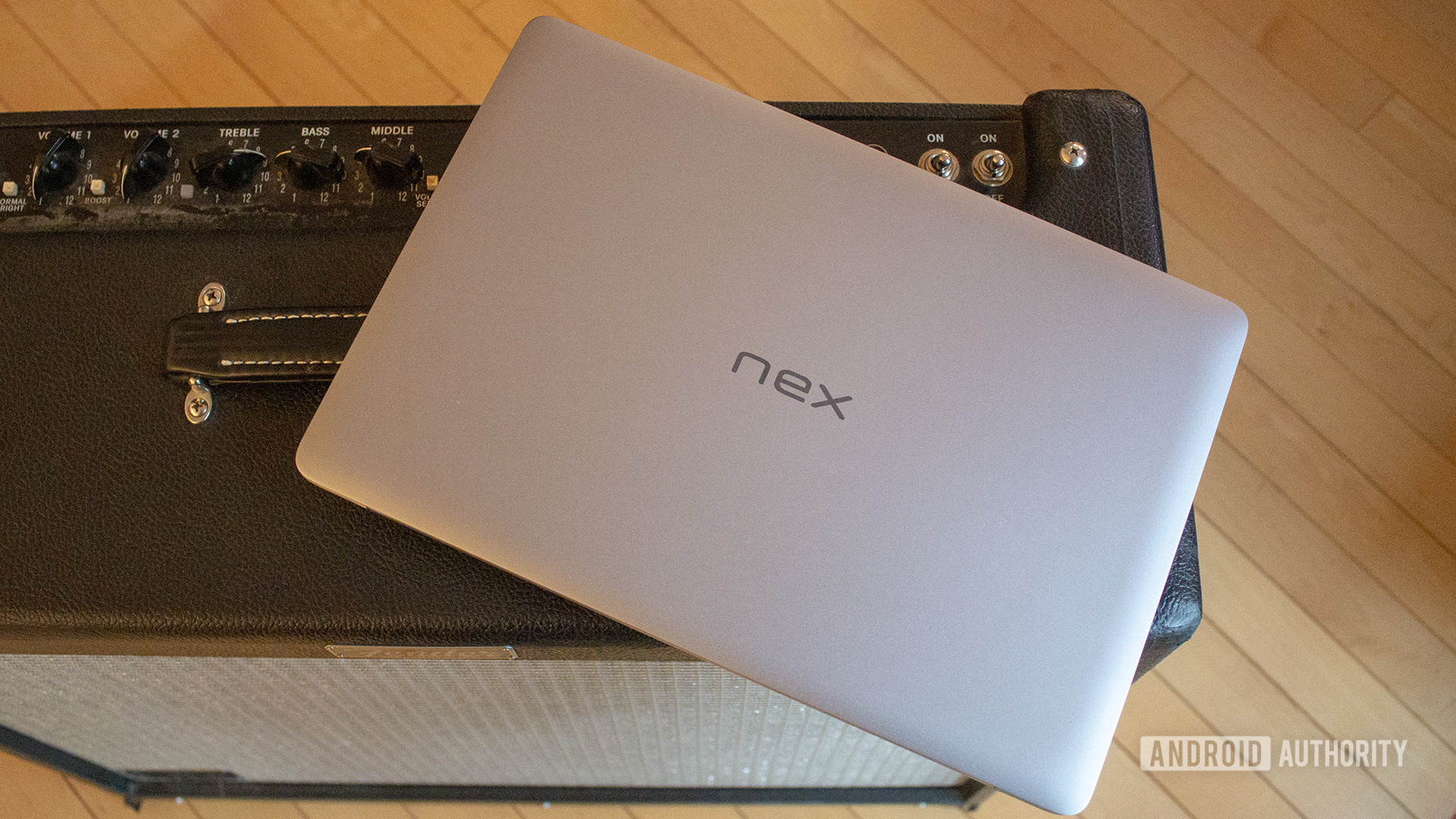
Nex Computer NexDock 2
What we like
What we don't like
Nex Computer NexDock 2
Last year, Nex Computers ran a successful Kickstarter campaign for the NexDock 2, a laptop shell primarily designed for use with your smartphone. The company raised half a million dollars easily and sold out of the device completely. We just got our hands on one and thought we’d put together a NexDock 2 review.
The story of NexDock is quite impressive, as the company was able to bring a product to life with a limited design team and without any VC funding.
Nex Computers plans to release a follow-up to the NexDock 2 later this year that will feature some notable upgrades. Since many people don’t know that laptop shells even exist, this rundown of last year’s model might be helpful in determining whether or not this relatively new type of product is appealing to you.
This is our NexDock 2 review.
What is the NexDock 2?
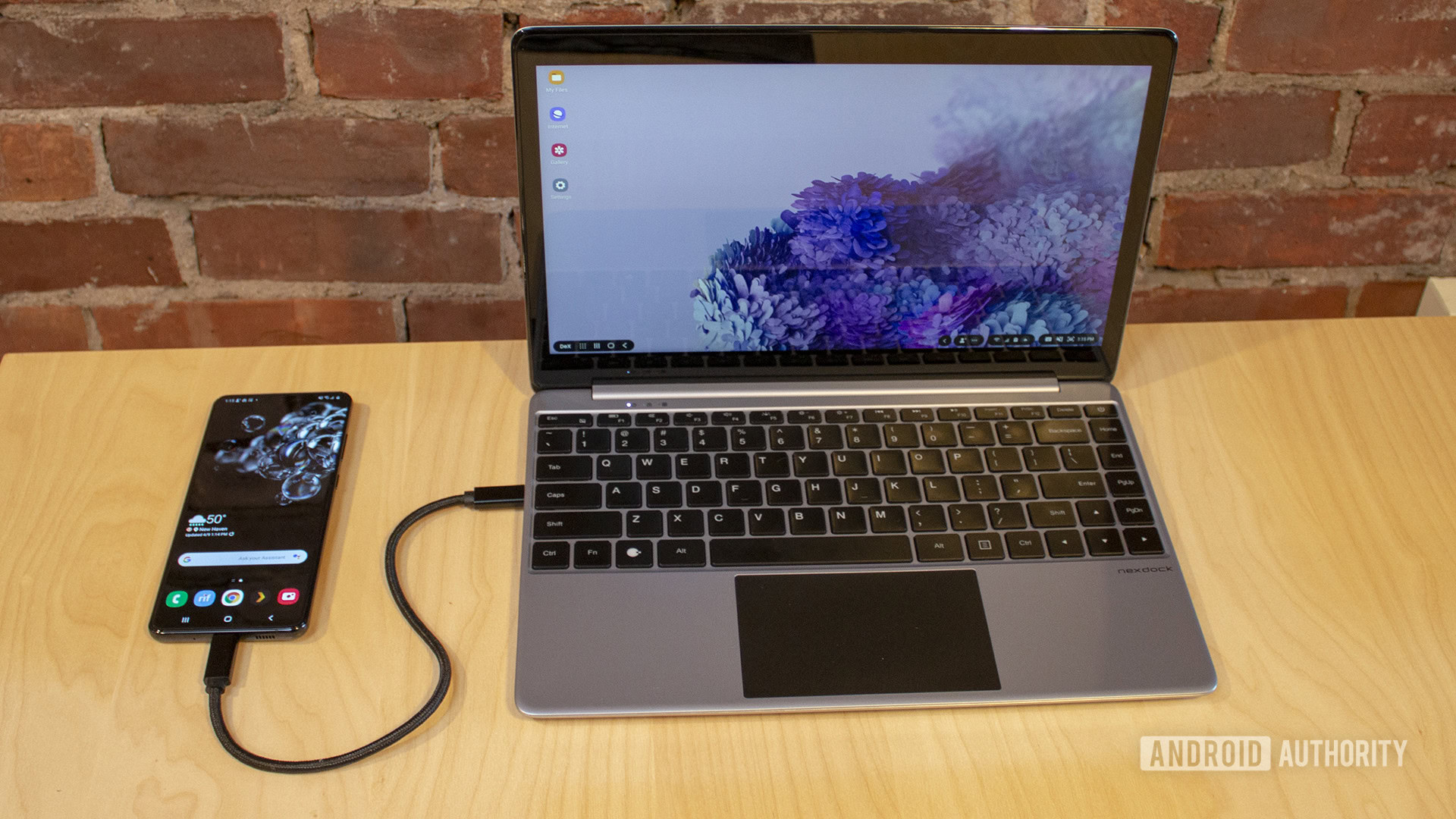
The NexDock 2 represents a fairly new type of product colloquially referred to as a laptop shell. Essentially, it’s a laptop that doesn’t include most of the internal hardware you would expect, meaning it has no hard drive, no RAM, no CPU, etc. It has a monitor, a keyboard, an internal battery, and a unique set of components that help it run properly by “leeching” off of a second device.
Since this NexDock 2 review is on Android Authority, we are going to focus mostly on an Android smartphone as that second device — specifically the Samsung Galaxy S20 Ultra. However, you could also hook up other systems to the NexDock 2, such as a Raspberry Pi or other single-board computer. Pretty much anything that is designed to output video and operates via some form of human input could benefit from something like the NexDock 2.
The bottom line, though, is that the NexDock 2 is pretty much useless without some other device providing the guts.
How does a laptop shell work?
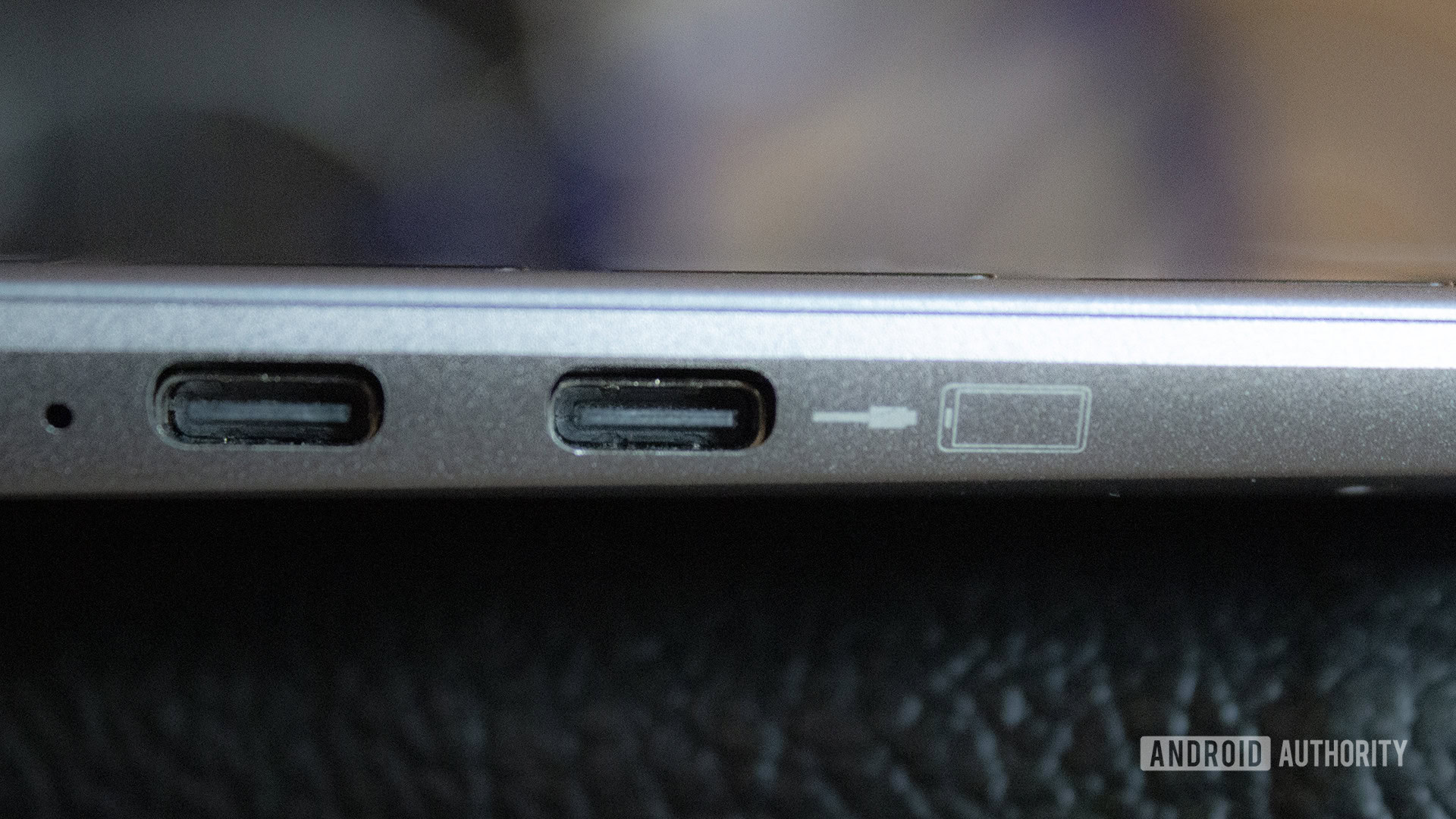
If you turn the NexDock 2 on, it simply displays a boot screen that says, “NexDock is ready to connect.” It won’t function in any way until you connect something to it.
With the NexDock 2 powered on, connect your smartphone to it using one of the many high-quality USB-C cables Nex Computers includes in the box with the shell. There’s a USB-C port on the left side of the NexDock 2 that clearly shows a smartphone, so you know the correct port to use.
Related: Samsung Galaxy S20 Ultra review: Another name for overkill
Once you connect, the NexDock 2 displays your smartphone on its monitor. With a Samsung smartphone serving as the primary device, Samsung’s proprietary Dex system takes over and presents a clean, Windows-like UI on the NexDock. Smartphones without Dex or something similar will simply be mirrored on the NexDock. For example, my OnePlus 7 Pro, which does not allow for the home screen to be shown in landscape mode, shows only a vertical smartphone screen on the NexDock display. Check out what I mean in the photo gallery below.
While your phone is connected to the NexDock 2, a symbiotic relationship forms. The NexDock steals computing power from the phone and the phone ingests battery power from the NexDock. You have access to everything from the phone: all the apps, files, text messages, contacts, etc., are accessible using the NexDock’s trackpad and keyboard.
When you’re done, you simply unplug your phone. The NexDock 2 will go into power-saving mode until the next time you need it. It’s all very seamless and simple.
What do I like about the NexDock 2?
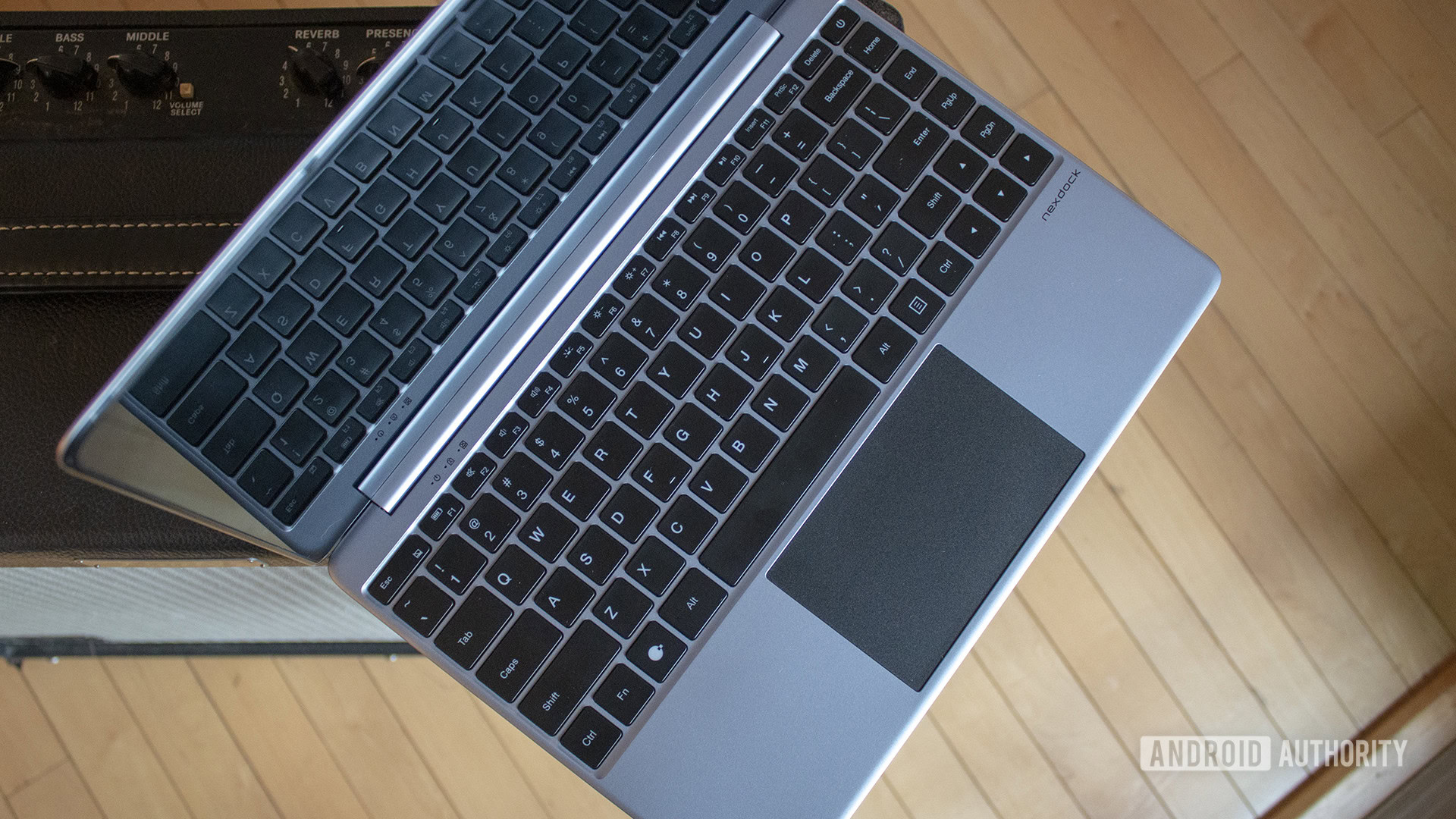
I was immediately stunned by the premium design. It felt like I was holding a $1,000 laptop, and it even includes some high-end design features you don’t normally see on sub-$300 systems.
Here’s what I absolutely loved about the NexDock 2:
That premium build: The brushed aluminum finish of the NexDock 2 makes it look and feel like a professional machine. There are subtle design elements that you would usually find on more expensive laptops, such as the ability to open the NexDock 2 with just one hand. The thick rubber pads on the bottom prevent it from sliding around while you’re working and the lack of any need for fans give it a beautiful, minimalist aesthetic.
Keyboard/trackpad: The backlit keyboard is sturdy with great travel, and the trackpad has a subtle, textured finish that made it an absolute joy to use. I found the cursor movement to be accurate and I got comfortable using the machine quite quickly.
Related: The best laptops of CES 2020
Battery life: Since there aren’t any traditional PC components inside this laptop, there’s tons of room for the battery. The 6,800mAh battery inside lasted me for seven hours of straight use with the smartphone attached being at full battery. That was not seven hours of light usage, either, that was seven hours of writing without the screen going dark once. However, I did not have the backlit keys on and the display brightness was at about 50%. You could probably get five or six hours of straight use out of the NexDock 2 if you maxed those out.
All the ports: As laptops get thinner and thinner, ports become fewer and fewer. Not so with the NexDock 2. Nex was able to cram three USB-C ports, one standard USB-A 3.0 port, a headphone jack, a microSD slot, and even a full-size HDMI port into this thing.
All the cables: The NexDock 2 comes with so many cables. Some include: a full-size HDMI cable, multiple USB-C cables, and various adapters. Basically, wherever you live and whichever Android smartphone (or Raspberry Pi) you own, the cables you need to connect to the NexDock 2 are likely in the box.
What do I dislike?
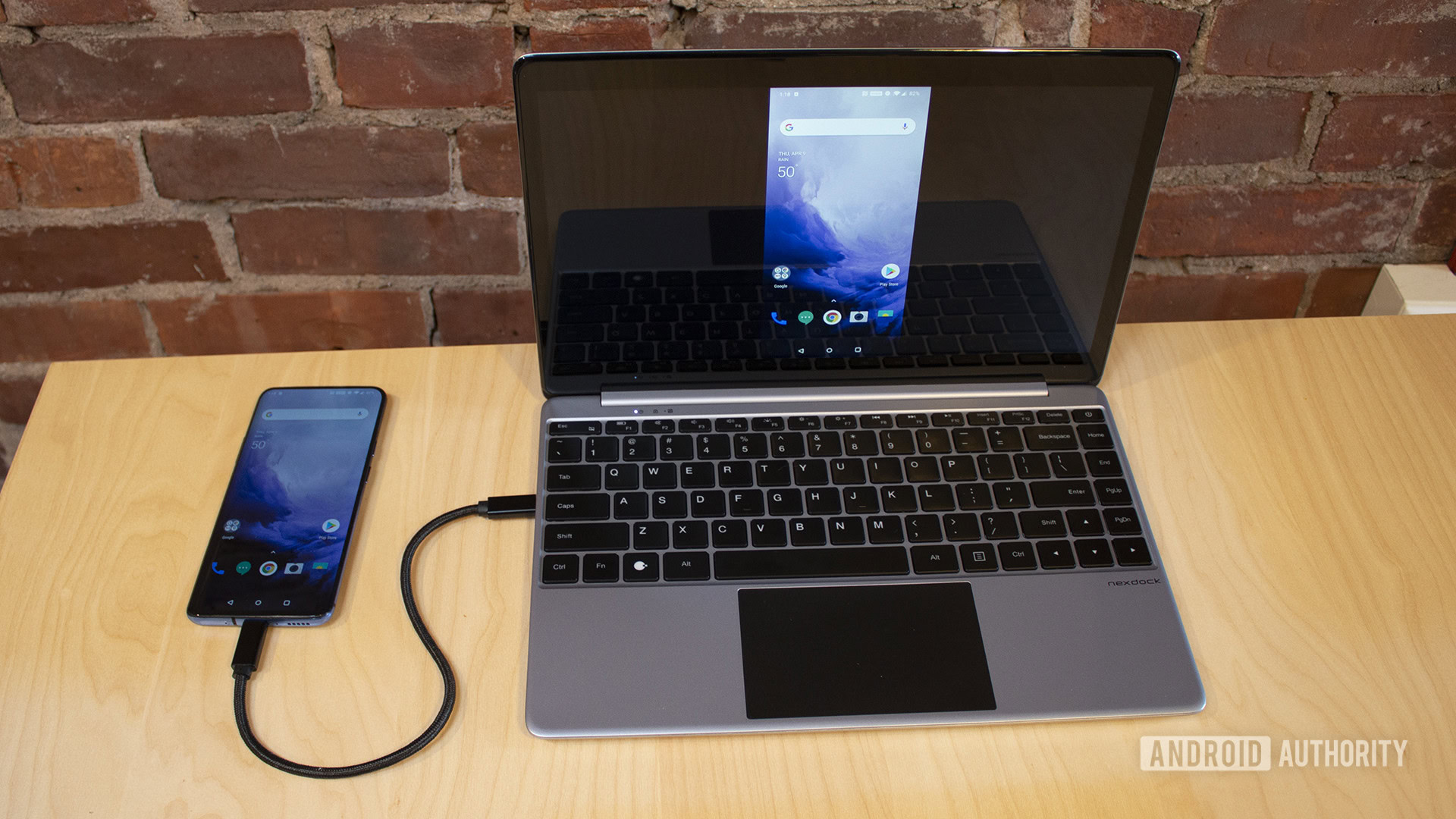
Although I sometimes had to remind myself that I was running a review of a laptop shell and not an actual laptop, I experienced some real head-scratching moments during my time creating this NexDock 2 review.
Here’s where the NexDock 2 needs some work:
My god, this thing is heavy: My primary laptop is a Dell XPS 13 (2019 edition), which weighs about 2.75 pounds and is in a similar 13-inch size class as the NexDock 2. The NexDock weighs about 3.25 pounds, which is considerably heavier. Since my Dell has so many more components inside (including a similarly-sized battery), one can’t help but wonder why the NexDock needs to be so heavy.
I missed having a touchscreen: The NexDock 2 doesn’t have a touchscreen, a feature I am used to with my Dell. When you’re using Android apps, which are designed with touch in mind, it becomes even more apparent that a device like this kind of needs a touchscreen as a base feature.
The display is not bad, but not good: Speaking of the 13.3-inch display, I can say some good and bad things about it. It’s got decent color balance and brightness with good resolution (1,920 x 1,080), but it’s also got huge bezels and no built-in webcam or microphone. If you want to make a video call with your NexDock, you pretty much can’t — it would be easier just to undock your phone and use it instead.
Without Dex, there would be no point: Using the Samsung Galaxy S20 Ultra with its built-in Dex platform was really cool. It sort of transformed the NexDock into a fancy Linux machine. However, as I said earlier, my OnePlus 7 Pro doesn’t have a desktop interface built-in, so using the NexDock with that phone was laughably bad (see photos below). As it stands today, I wouldn’t recommend anyone even think about buying a laptop shell unless they own or plan on buying a flagship from Samsung or HUAWEI, which also has a desktop interface called Easy Projection. In the future, Android could have its own desktop interface built right in, but it will be a while before that happens.
Gallery
What alternatives are there?
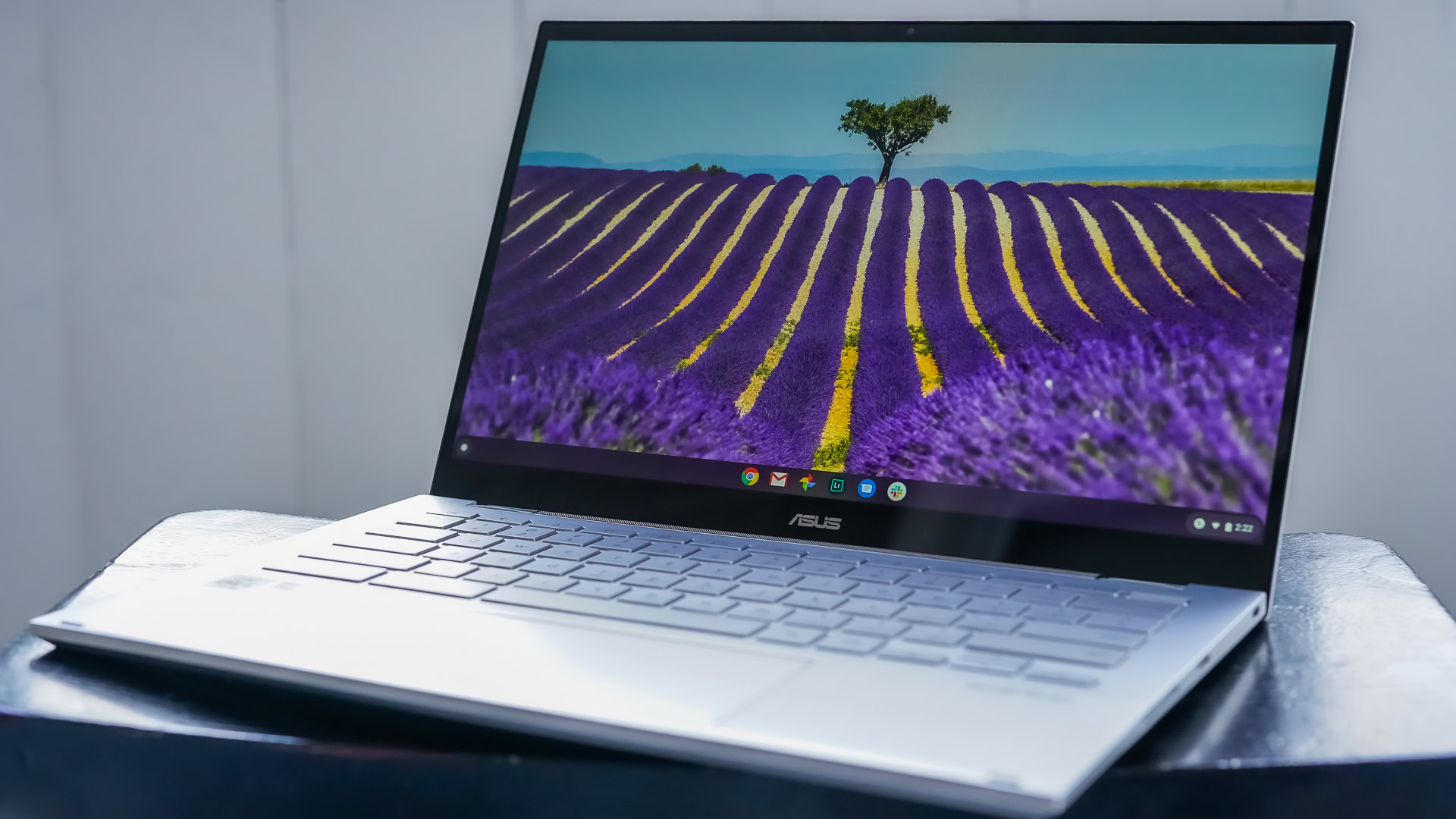
If you want a simple and inexpensive computing solution, you could buy something like the NexDock 2 or a similarly priced Chromebook. The biggest advantages with a Chromebook are that it will operate with or without your phone attached, has a built-in webcam, and might even include a touchscreen. Chromebooks should work for most anyone’s basic computing needs.
Meanwhile, the NexDock 2 has caveats that might make it unappealing to general consumers. It’s heavier than many laptops and requires a specific phone in order to work properly, making the NexDock a niche product.
However, that doesn’t mean you absolutely shouldn’t buy a NexDock. The company has some cool things in store and you might appreciate its ambitions.
Should you buy the NexDock 2?
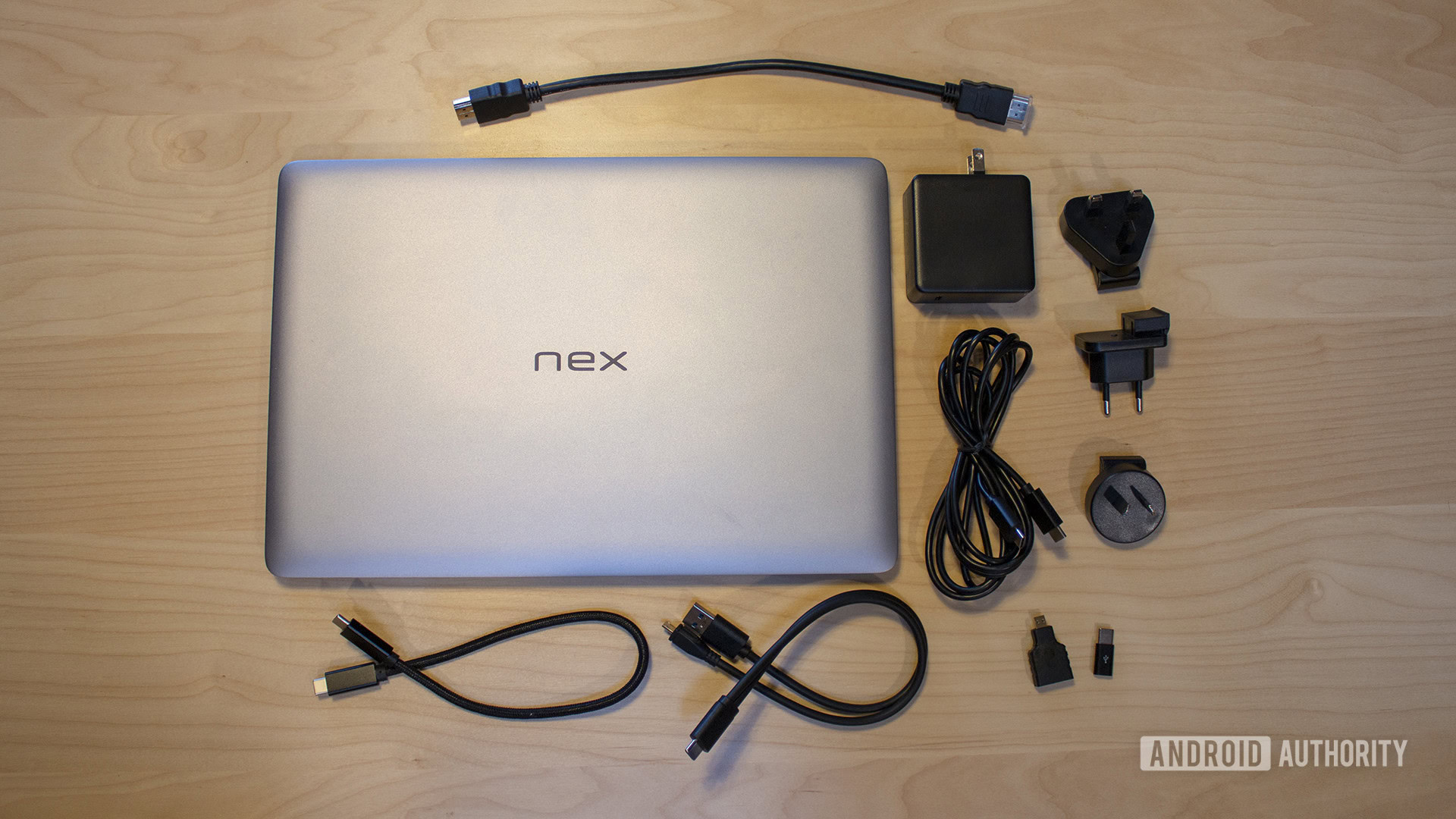
As I stated above, the NexDock 2 is no longer for sale, though you may be able to find them in the used market. However, there is a new NexDock on the way that fixes most of my gripes with the NexDock 2. The NexDock Touch is in the pre-order phase right now and features a smaller, sleeker design, thinner display bezels, a lower price ($249 plus shipping), and a touchscreen. The NexDock Touch will likely be more expensive when it comes out of the pre-order phase in July 2020, though, so get in early if you’re interested.
With the NexDock Touch in mind, the NexDock 2 seems more like a transitionary product from the company than anything else. But we hope this review helps people who think a laptop shell might be a cool thing to own. The way I see it, you should buy a NexDock 2, NexDock Touch, or another laptop shell only if you can count yourself in one or more of the niche categories below:
- You own a Raspberry Pi or other card computer and want a sleek way to interface with it.
- You use a Samsung or HUAWEI flagship smartphone as a hotspot a lot and are sick of any carrier limitations you have on that service. Since the NexDock uses your phone as the “computer,” you might never need to turn your hotspot on again with this device.
- You are hyper-aware of your environmental footprint and want to reduce waste as much as possible. With a NexDock, you might never need to upgrade your laptop again because there are no components in the device that will become obsolete for many, many years.
In my view, if you don’t fall into at least one of those categories above, just buy a Chromebook. Almost every modern Chromebook runs Android apps, includes a built-in webcam, and has battery life that is usually stellar. You also can use it without your phone attached and still easily sync your files, media, and other data across the two machines.
That’s it for our NexDock 2 review! Will you be buying a laptop shell such as the NexDock Touch, which is in the pre-order stage now? Is there another shell you’re looking at? Let us know in the poll below and then hit up the comments!